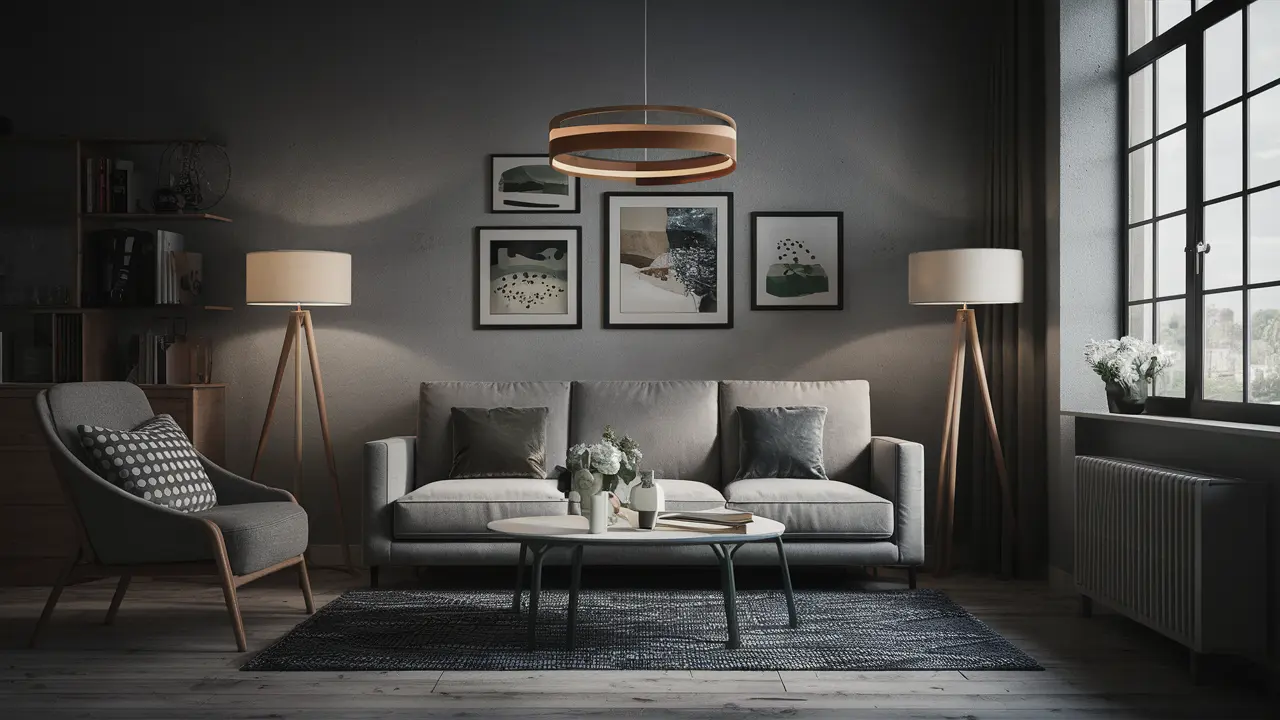Lighting is a basic element in any interior design, capable of transforming the feeling of a space with the flick of a switch. From improving functionality to setting the mood, the right lighting choices can significantly influence the aesthetic and practicality of both homes and commercial areas.
Understanding Basic Lighting Types
Before looking at specific styles, it’s important to understand the three basic types of lighting that serve as the building blocks for any well-lit space:
Ambient Lighting
This is the primary source of light in a room, often referred to as general lighting. It provides a comfortable level of brightness without glare, allowing for safe and easy movement throughout a space. Examples include ceiling-mounted lights and recessed fixtures that distribute light broadly.
Task Lighting
As the name suggests, task lighting is intended to help perform specific tasks. This type of lighting is brighter and more focused, commonly used in work areas like kitchens, offices and reading nooks. Under-cabinet lights, desk lamps and pendant lights over kitchen islands are typical examples.
Accent Lighting
Accent lighting highlights certain features of a room, such as artwork, sculptures or architectural details. It creates visual interest and draws the eye to its focal points. Spotlights, wall-mounted picture lights and track lighting are common forms of accent lighting.
Defining Lighting Styles
Each lighting type can be added in various styles, reflecting different periods and design philosophies. Here are some popular lighting styles:
Rustic
Rustic lighting aims to create a cozy, natural vibe, often incorporating elements like wood, mason jars or a wrought iron rustic chandelier. It complements rural or country-style interiors, with fixtures that offer a handcrafted, earthy appearance.
Modern
Modern lighting emphasizes simplicity and functionality, often featuring clean lines and metallic finishes. It tends to be sleek and minimalistic, using materials like steel, glass and polished metals. Modern fixtures are versatile and can fit well in various contemporary settings.
Industrial
Inspired by old factories and industrial spaces, this style includes raw materials such as exposed steel, rustic metals and unfinished woods. Industrial lighting often includes elements like metal pendant lights, Edison bulbs and sconces with a practical look.
Traditional
Traditional lighting is characterized by elegance and richness, often featuring intricate designs and rich materials like crystal, bronze and gold. Chandeliers with ornate details and classic lampshades are staples of this style, suitable for formal spaces that emphasize luxury and comfort.
Choosing the Right Lighting for Your Space
Selecting the appropriate lighting for your space involves more than just choosing attractive fixtures. Consider the following factors:
- Functionality: Determine what activities happen in each room and choose lighting that supports this. For instance, a study will require effective task lighting, while a bedroom might benefit more from softer, ambient lighting.
- Scale and Proportion: The size of lighting fixtures should complement the size of the space. A large chandelier can overwhelm a small room, whereas small, discrete lights might get lost in a large, open area.
- Energy Efficiency: With increasing awareness of environmental impact, opting for energy-efficient lighting, such as LED lights, is a practical and sustainable choice.
By understanding the different types of lighting and the variety of styles available, you can make informed decisions that improve your interiors and create the desired ambiance. Whether aiming for practicality, style or a blend of both, the right lighting can truly transform any environment.



